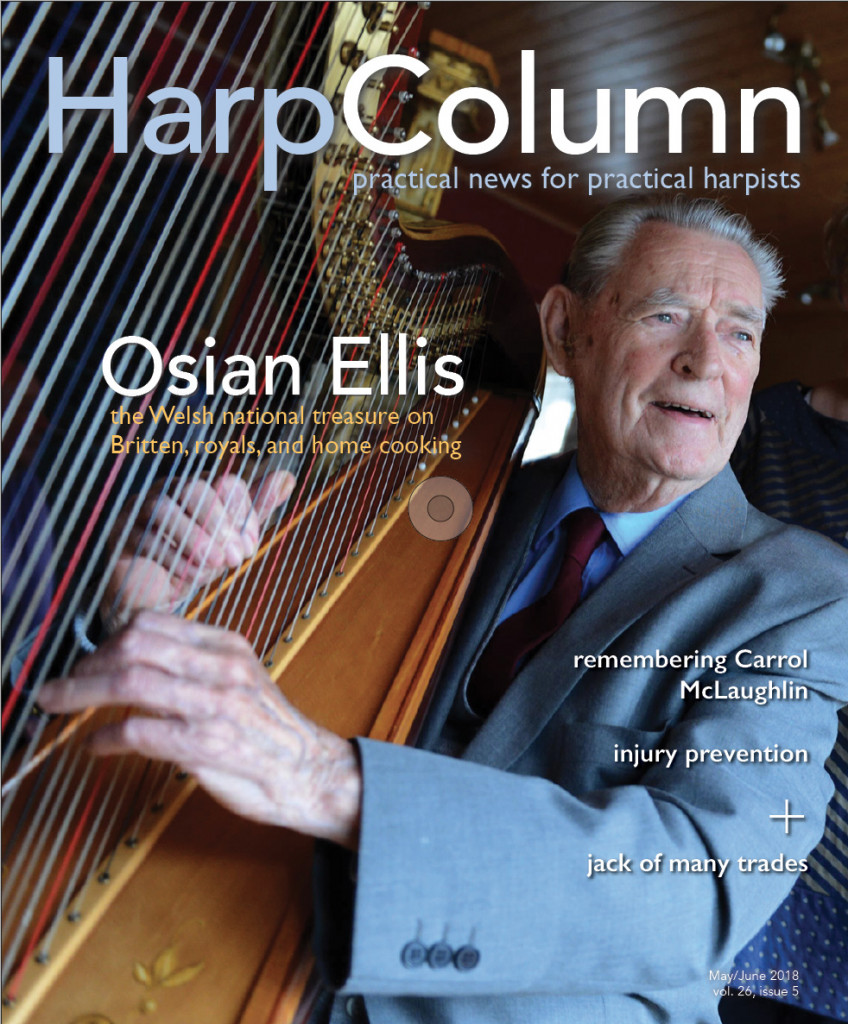Student Scenario #1: I’m looking for some summer ideas for my students. Most of them stay around during the summer and want to continue their lessons with me. That’s great from an income perspective, but I feel burned out from the busy year, and I need a break. How can I keep my students involved with their harp studies and at the same time have a more relaxed and less stressful summer myself?
Student Scenario #2: My students are so busy over the summer. They are in sports camps and on extended vacations. Weekly lessons are out of the question. How can I keep them connected to the harp over the summer so we don’t have to play catch up in the fall?
Summer should be a time for rest and relaxation, but it can feel like more hard work for the dedicated teacher who just wants a little time for herself. If your students aren’t able to attend any of the harp camps run by other teachers, then the pressure is on. It becomes your task to create a summer harp experience that will inspire them to explore the harp in a new or deeper way.
Thankfully, a little advance planning and some ingenuity can provide you with happy harp students and the break you need.
First, ditch the weekly lesson routine. Summer study can have a different flow than the rest of year, and I think the change of pace energizes teachers and students.
Make your schedule your first priority. Would you like mornings to yourself, or would you rather teach in the morning and be free the rest of the day? Would you like to schedule all your students in one week each month and have the rest of the time free? You decide when you want to teach.
Next, make summer harp study a group activity. Encourage your students to work, learn, and play together in group lessons, classes, or workshops. You could easily plan a summer curriculum that is fun for your students and lets you enjoy your summer too. Parents also appreciate the extra freedom it allows their family scheduling.
One teacher I know creates a week-long day camp for her students. She chooses a theme and selects music. She groups her students by age, with the younger ones participating only in the morning classes, and the older students bringing a lunch and staying through the afternoon. Five days of this harp “stay-cation” is something her students look forward to each year, and it provides her with a healthy boost to her personal budget.
Instead of a week-long camp, you could try group classes, scheduling them once a week, once every other week, or even once a month. The classes could be directed to learning audition music for the next year or music theory or ensemble playing.
Creating themes for each class can help make them fun for the students. For instance, you could celebrate “Christmas in July,” and prepare music for next Christmas, including holiday-themed snacks and decorations to add to the festive mood. Here’s a tip one smart teacher shared with me: ask your students to choose the themes and create the decorations. They will love it, and it’s that much less work for you!
Summer is also the perfect time to explore how music connects with the other arts. You could incorporate workshops on storytelling, drawing, or painting. The students could experiment with music composition or improvisation.
You don’t have to be the expert in all these areas. Reach out to your students’ parents and other people in your community and ask them to share their expertise with your students. For instance, take a nature walk with a local guide and have your students take pictures along the walk. Then back at their harps, help them create music inspired by what they saw and felt.
Share your hobbies with your students. Do you love to cook? Have a morning harp workshop followed by a cooking class in your kitchen. Try pairing French music with crepe making or the Nutcracker cadenza with making a gingerbread house.
If doing all this on your own feels daunting, try finding another music teacher to combine students with yours. For many years, I held a summer camp with a flutist friend. In that one week, our students were able to share in chamber music and ensemble experiences that gave them the skills they needed for their school ensembles the following year.
Perhaps you have a few dedicated and exceptionally gifted students that you want to nurture. Try teaching them in their own group “intensive” where they can support and challenge each other without feeling held back by less advanced students.
One creative teacher I know holds “Harp Days” in her community that are designed to introduce potential students to the harp. She designs the events to be fun and “hands-on” with her current students helping to teach the guests who want to try the harp. It’s a fabulous idea for growing her teaching studio, as well as building camaraderie and developing teaching skills among her current students.
Adult students appreciate summer harp experiences as well. They particularly treasure working alongside other adults, whether harpists or other musicians. Give them a chance to play in an ensemble and watch them shine!
Looking back over my own summers as a young harpist, I remember so vividly days when I was able to spend time with my teacher away from the harp. I learned as much about being a harpist and musician during those relaxed, casual moments as I did in the entire year of lessons. They say that music happens in the white space between the notes. It also happens in the lazy days of summer when you least expect it. •
Anne Sullivan taught music theory and ear training at the Curtis Institute of Music from 1982–2002. She teaches harp at the University of Delaware and helps harpists find harp happiness
at harpmastery.com.







